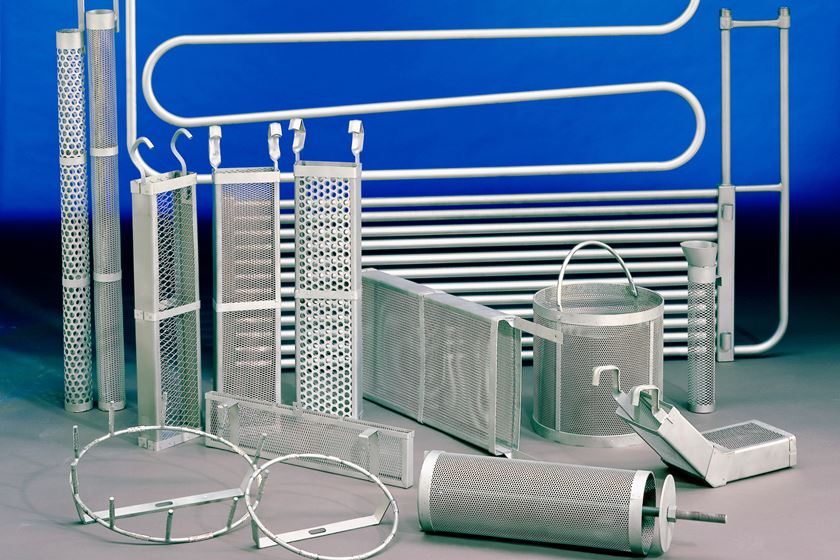Chromic Acid Anodizing and Salt Spray Testing
Question: We are processing 7050-T7 aluminum alloy parts and test panels per the following procedure:1.
Question:
We are processing 7050-T7 aluminum alloy parts and test panels per the following procedure:
1. Vapor degreasing using trichloroethylene for 2 min at 130F
2. Non-etch alkaline cleaning at 135F
3. Deoxidizing and desmutting at room temperature for 1-2 min in chromic-nitric bath (Cr+6 = 8.5 g/l, HNO3 = 135 g/l)
4. Chromic acid anodizing (22 v) at 96F for 50 min (CrO3 Free = 50 g/l and Total = 59.1 g/l, Al = 1.2 g/l and pH = 0.38)
5. Dilute chromate sealing at 205F for 28 min (Cr+6 = 65 ppm, pH = 3.2)
Of course, between each of these steps we are using DI water rinsing. At the end of the process, both the parts and the test panels come out very uniform in color and have an excellent appearance. We usually obtain very good coating weight results averaging about 320 mg/ft2. However, after the panels have been exposed to the salt spray corrosion testing, they sometimes exhibit dark areas about 1 x 1 inch. These dark areas can convert into corrosion pits (white spots with head and tail appearances) as defined by the ASTM 117-97. We could not establish a direct correlation between these dark areas and corrosion pits. J.N.
Featured Content
Answer:
There is some information that I do not have. My tables do not list the nominal chemical composition of 7050 alloy, although I know that it is relatively higher in copper than many of the 7000 series alloys (greater than 2% copper). I do not have an anodizing procedure for 7000 series alloys in chromic acid. However, my understanding is that the 22 v procedure is a recommended method of processing.
Be sure to use high quality DI water in the chromic acid bath makeup. Most anodizing processes are intolerant of chlorides in the anodizing bath. Be sure the chloride in your bath is well below 200 mg/l. If you use HCl to regenerate your DI cation unit, for example, it is easy for chlorides to be present in the DI water. Even when using sulfuric acid as a cation regenerant, chlorides may be present in the DI water if you are using a city supply as the DI feed water. Chlorides are usually present in city water and may leak through the resin if a good regeneration is not obtained. Sulfuric acid is the recommended regenerant for the cation bed of your DI unit, but there are special procedures for using sulfuric, so be careful.
Another important consideration in chromic acid anodizing is the high anode to cathode ratio. Ratios of 5:1, 10:1 and higher, anode to cathode, are used. This helps to keep a low concentration of trivalent chrome in the bath. Sulfate concentrations of less than 100 mg/l will help keep the reduction of Cr+6 to Cr+3 at the cathode to a minimum.
MIL-A-8625 states, "The use of a hot deionized water seal on Type I and IB coatings yields good corrosion resistance and may eliminate the appearance of patchy dark gray areas after salt spray exposure." Twenty-eight minutes of sealing in your above mentioned solution is longer than the spec calls out. You don't say specifically what the "chromate" solution is, but I assume it is chromic acid. The spec calls for 5% solution of sodium or potassium dichromate or boiling DI water. Your sealing bath doesn't appear to meet that requirement. The Alcoa Alumilite Handbook recommends a sealing solution of 10 ppm (mg/l) [0.01 g/l] chromic acid at a temperature of 208-212F for 10 min.
You do not state the length of the salt spray exposure period you are using. MIL-A-8625, if that is the agreed upon standard, states 336 hr salt spray exposure, but it can be anything that you and the customer (internal or external) agree upon.



















